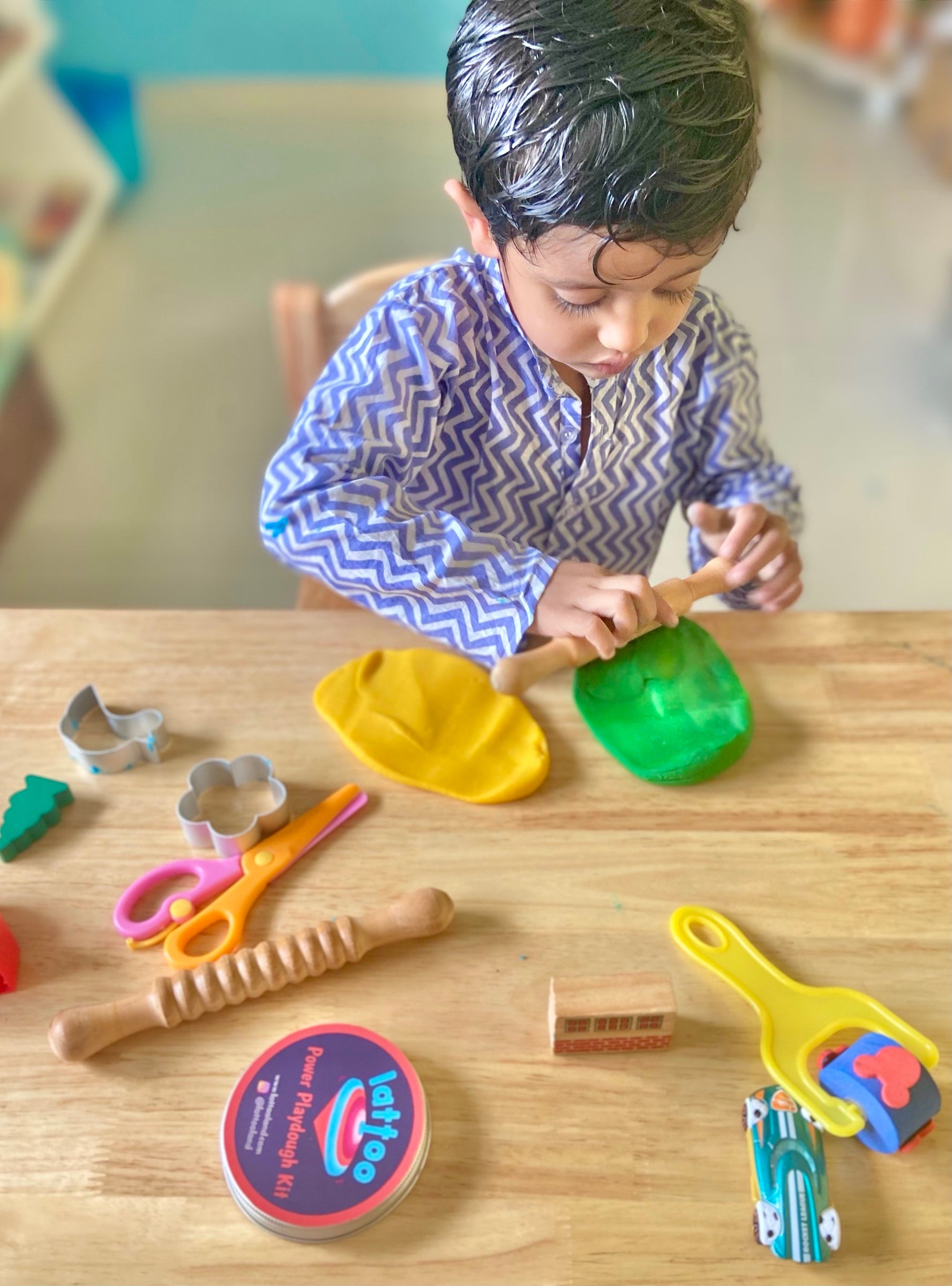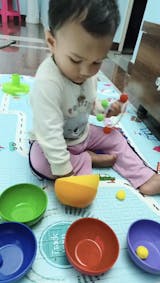How to Handle Toddler Aggression: Professional Parenting Advice
Toddlerhood is a whirlwind of emotional development, rapid learning, and yes—sometimes, unexpected bursts of aggression. If your little one has started hitting, biting, throwing tantrums, or pushing other children, you're not alone. These behaviors, while challenging, are usually a result of toddlers struggling to express big emotions with limited language skills. The good news? With the right approach, toddler aggression is both understandable and manageable .
In this Blog , we’ll explore the common causes behind these aggressive outbursts and share practical, professional parenting strategies to help you respond with patience, consistency, and calm.
Understanding Toddler Aggression
Why Does Aggression Happen?
Before diving into strategies, it’s important to understand the “why” behind the behavior. Toddlers are in a phase where they experience big emotions but have very few tools to express them. This often leads to aggressive outbursts.
-
Frustration (e.g., they can't express what they want)
-
Overstimulation (too much noise, activity, or attention)
-
Exhaustion or hunger
-
Testing boundaries (a natural part of growing up)
-
Copying behavior they’ve seen (from peers, screens, or adults)
Toddlers don’t yet have the tools to regulate their emotions or solve problems with words. That’s where you come in.
Professional Tips for Managing Toddler Aggression
1. Stay Calm and Grounded
Your response plays a crucial role in managing toddler aggression. Reacting with anger or frustration can escalate the situation, while a calm, steady approach helps defuse it. Take a deep breath, speak in a firm but gentle tone, and maintain relaxed, non-threatening body language. Showing control and compassion teaches your child how to handle big emotions.
Pro Tip: Kneel down to your toddler’s eye level during these moments. This small gesture helps them feel seen, safe, and understood, making it easier to connect and guide them through the situation without intimidation or fear.
2. Set Clear and Consistent Boundaries
Consistency is key. Children feel safer when they understand boundaries and know what to expect. Setting clear rules helps them feel secure and learn appropriate behavior. Use simple language to explain what’s not acceptable—for example, “We don’t hit.” Always follow through with consistent, calm consequences to reinforce the message.
Pro Tip: If your toddler hits during playtime, pause the activity and say, “We stop playing when we hit. Hitting hurts.” Avoid anger or harsh tones clarity and consistency are more effective. Over time, this approach helps your child connect actions with outcomes and encourages better choices in the future.
3. Name the Emotion Behind the Behavior
Helping your toddler identify and name their emotions is a powerful way to reduce aggressive behavior. When they’re upset, gently put their feelings into words:
“You’re angry because you wanted the toy.”
“You’re sad because you didn’t get a turn.”
This simple practice builds emotional awareness and teaches your child that it’s okay to feel strong emotions but there are better ways to express them. Over time, developing emotional literacy helps toddlers communicate more effectively, leading to fewer outbursts and more positive interactions. It also strengthens your bond by showing empathy and understanding during their tough moments.
4. Model Calm Conflict Resolution
Children learn best by observing or watching, especially during the toddler years when their mirror neurons are actively developing. These brain cells help them imitate what they see, making your behavior a powerful teaching tool.
Show your toddler how to handle frustration in healthy ways use words to express emotions, take deep breaths to stay calm, or ask for help when needed. When they see you managing stress without yelling or reacting impulsively, they begin to mirror that behavior. Modeling calm problem-solving not only teaches emotional regulation but also builds a strong foundation for your child’s social and emotional development over time.
5. Use Time-In Instead of Time-Out
Instead of using traditional time-outs, try a “time-in” to guide your toddler through difficult emotions. A time-in involves sitting quietly with your child, helping them calm down and understand what happened. This approach focuses on connection rather than isolation, teaching emotional regulation instead of instilling shame. During a time-in, you can offer comfort, name their feelings, and gently explain why their behavior wasn’t okay. It’s a moment of teaching, not punishment. Over time, this method builds trust and helps your child develop self-control, empathy, and better coping skills for handling frustration and big emotions in the future.
This approach helps toddlers regulate their emotions with your support rather than feel isolated. Sit with your child, breathe together, and talk about what happened once they’re calm.
6. Teach Replacement Behaviors
Teach your toddler positive alternatives to aggressive behavior by offering simple, age-appropriate options. If your child bites, redirect that energy by giving them a stress ball or chew-safe toy or calming sensory play toys . If they push others, help them use words like, “I want a turn,” instead. The key is to model and practice these alternatives during calm, everyday moments not just when emotions are high. Repetition helps reinforce the new behavior, making it easier for your toddler to choose a better response next time. With gentle guidance, they’ll learn how to express their needs in healthier, more respectful ways over time.
7. Watch for Triggers
If your toddler's aggression is frequent, keeping a behavior journal can be a helpful tool. Track when and where outbursts occur—before naps, after screen time, during transitions, when they’re hungry, after daycare, or around certain people.
Noting these patterns can reveal hidden triggers that contribute to their behavior. Once you identify what sets them off, you can take steps to manage those situations in advance. For example, offering a snack before a nap or limiting screen time may reduce irritability. Providing engaging toys can also help. This proactive approach will allow you to support your child more effectively, reducing aggressive episodes and encouraging calmer interactions.
8. Praise Positive Behavior
Catch your toddler being kind and praise them immediately. Whether they share, wait patiently, or use words to express their feelings, positive reinforcement goes a long way. Acknowledging these moments helps them understand what behavior is valued and encourages them to repeat it. Reinforcing kindness and good behavior is just as important as addressing negative actions. By praising your toddler for their positive choices, you’re teaching them empathy, patience, and self-control. This not only boosts their confidence but also strengthens the positive behaviors you want to see more of in the future.
9. Be Patient With the Process
Changing behavior takes time, and aggression won’t vanish overnight. However, with consistent guidance, empathy, and clear boundaries, most toddlers show significant improvement. Patience is key as your child learns to regulate their emotions and express themselves in healthier ways. By calmly addressing aggressive behavior and reinforcing positive actions, you’re helping them develop important skills like emotional regulation and empathy. While progress may be gradual, consistency in your approach will help your toddler grow and understand what’s expected, leading to fewer outbursts and more positive interactions over time. Trust the process and stay committed to your child’s development.
10 Avoid Shaming or Labeling
Labeling your toddler as bad or asking Why are you like this? can damage their self-esteem and may worsen aggressive behavior. Instead, focus on the behavior, not the child. Reinforce positive actions by guiding them with clear, gentle language. For example, say
“We use gentle hands” instead of “You’re a naughty boy”
This approach helps your child understand that it’s the behavior that’s problematic, not their character. By separating the action from the child, you encourage better behavior without making them feel ashamed or unworthy, which can lead to healthier emotional development and self-image.
When to Seek Professional Help
Occasional aggression is normal, but if your toddler:
-
Hurts themselves or others frequently
-
Shows no signs of remorse or empathy
-
Doesn't improve with consistent guidance
It may be time to consult a pediatrician or child psychologist. Early support can make a big difference.
Handling toddler aggression is one of the more challenging parts of parenting, but it’s also an opportunity to teach vital life skills. Every tantrum or outburst is a chance to help your child learn self-control, empathy, and communication. By approaching aggressive behavior with calm, consistency, and compassion, you’re not just managing the moment you’re shaping your child’s emotional future.














